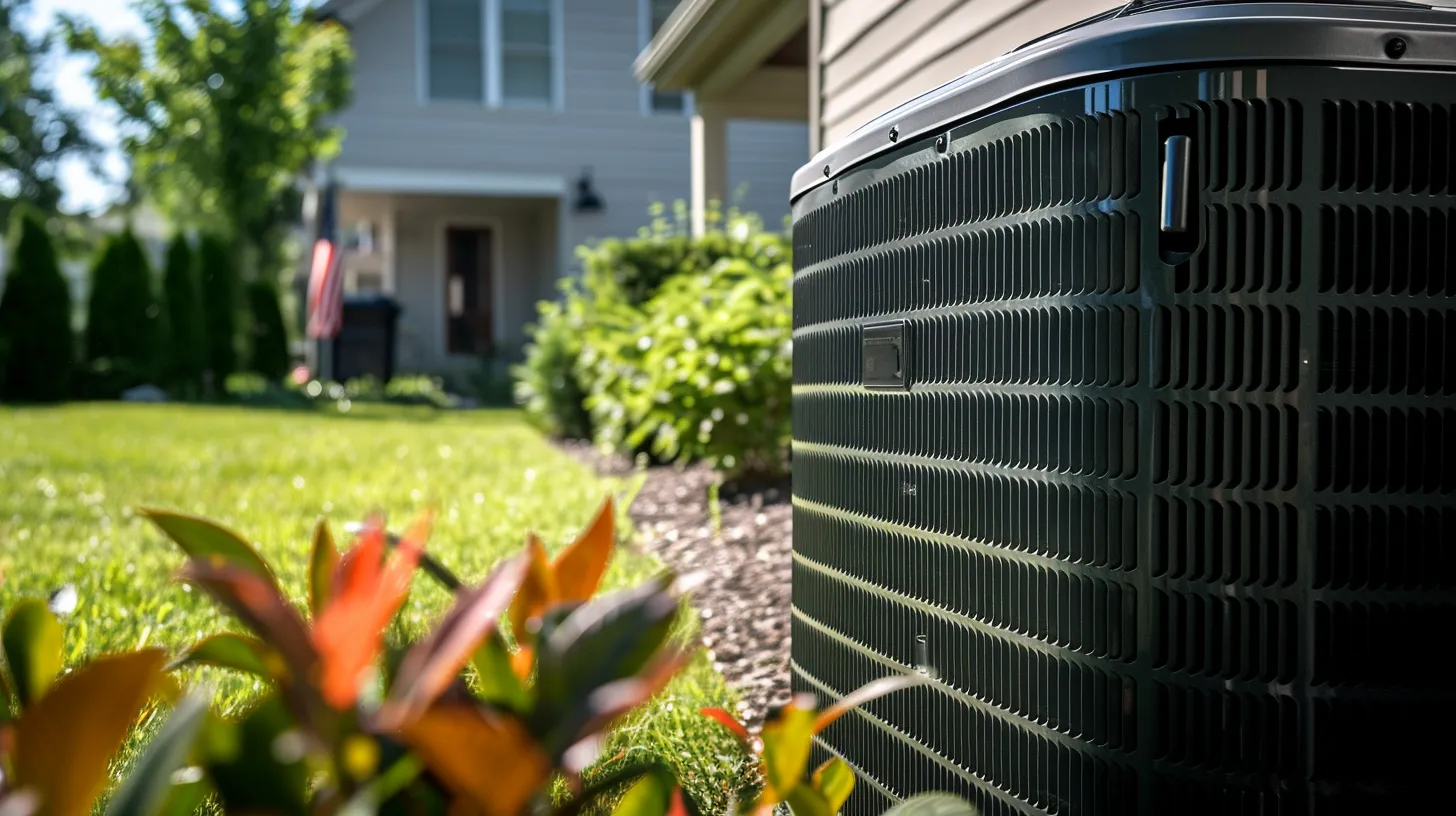
What Do You Put In An AC Condensate Line?
TL;DR: To maintain your AC condensate line, use products like bleach tablets, algaecides, vinegar, or commercial condensate line treatments. These options prevent clogs and mold growth, ensuring efficient moisture removal. Regular use of the chosen product keeps your condensate line clean and functioning well.
Your air conditioning system plays a crucial role in maintaining a comfortable and pleasant indoor environment. However, within this complex network of cooling and ventilation, there’s a lesser-known yet equally important component – the AC condensate line. This inconspicuous pipe is responsible for removing excess moisture generated by your AC unit, preventing mold, and ensuring optimal cooling efficiency. In this comprehensive guide, we’ll explore the vital question: What do you put in an AC condensate line? Discover the best practices, products, and maintenance tips to keep this essential part of your HVAC system in top-notch condition, ensuring a healthier and more efficient home climate.
The Purpose of an AC Condensate Line
In the world of air conditioning, moisture is an inevitable byproduct of the cooling process. When warm, humid air is drawn into your AC unit and cooled, water vapor in the air condenses into liquid form. This liquid, known as condensate, needs to be efficiently removed from your system to prevent a range of issues.
The AC condensate line serves a critical purpose in this regard. It is the conduit through which the accumulated condensate is transported away from your unit and eventually disposed of. By effectively channeling this moisture out of your system, the condensate line helps maintain the ideal humidity levels in your indoor spaces, contributing to your comfort.
Furthermore, if the condensate were allowed to remain within the system, it would create the perfect environment for mold, mildew, and other potentially harmful microorganisms to thrive. These unwelcome guests not only pose health risks but can also lead to foul odors and reduced air quality within your home.
In summary, the primary purpose of an AC condensate line is twofold: it removes excess moisture to maintain a comfortable indoor environment and prevents the growth of mold and mildew, ensuring the health and efficiency of your cooling system. In the next section, we will delve into the common issues that can arise when this crucial component is not properly maintained.
Common Issues With AC Condensate Lines
While AC condensate lines play a vital role in maintaining a comfortable and healthy indoor environment, they are not immune to problems. Here, we will explore some of the most common issues that can arise when your AC condensate line is not adequately maintained:
Clogs and Blockages:
- Accumulated dirt, debris, and algae can clog the condensate line over time, obstructing the flow of moisture.
- These blockages can lead to water backing up into your AC unit or even causing leaks inside your home.
Algae and Bacterial Growth:
- The dark, damp environment of the condensate line provides an ideal breeding ground for algae, bacteria, and other microorganisms.
As these organisms multiply, they can form slimy biofilms, further impeding the flow of condensate and causing foul odors.
Maintenance Problems Leading to Leaks:
- Neglecting regular maintenance of the condensate line can result in corrosion, cracks, or disconnections in the pipe. These issues can lead to leaks, potentially causing water damage to your property.
Reduced Cooling Efficiency:
- When the condensate line is clogged or obstructed, the excess moisture cannot be efficiently removed from the system. This can lead to reduced cooling efficiency, increased energy consumption, and higher utility bills.
Indoor Air Quality Concerns:
- Mold and mildew growth in the condensate line can release spores and allergens into the air, affecting indoor air quality.
- Poor air quality can lead to respiratory issues and allergies for occupants.
It’s important to be aware of these common issues to recognize the signs of condensate line problems promptly. Regular maintenance and proper treatment can help prevent these problems, ensuring the smooth operation of your air conditioning system and a healthier indoor environment. In the next section, we will discuss what you can put in your AC condensate line to prevent and address these issues.
What To Put in an AC Condensate Line
Now that we’ve explored the importance of the AC condensate line and the potential issues it can encounter, let’s delve into the solutions and treatments you can employ to keep it clean and efficient. When it comes to maintaining your condensate line, several options are available, each with its own set of advantages and considerations:
- Bleach Tablets: Bleach tablets are a popular choice for homeowners looking to prevent algae and microbial growth in the condensate line. These tablets are designed to slowly release bleach into the line, helping to kill off any unwanted organisms. However, it’s important to follow the manufacturer’s instructions and use them in moderation to avoid potential corrosion or damage to the line.
- Algaecides: Algaecides are chemical agents specifically formulated to inhibit algae growth. They are effective at preventing blockages caused by algae and can help maintain a clear and unobstructed condensate line. Ensure that the algaecide you choose is compatible with your system and follow the recommended application guidelines.
- Vinegar: Some homeowners opt for a more natural approach by using white vinegar to clean their condensate lines. Vinegar can help dissolve mineral deposits and inhibit microbial growth. It is a milder option than bleach and may be suitable for those who prefer eco-friendly solutions. Regularly pouring a diluted vinegar solution into the line can help maintain its cleanliness.
- Commercial Condensate Line Treatments: There are various commercial condensate line treatments available on the market. These products are specifically designed to address condensate line issues. They often combine antimicrobial agents with cleaning agents to provide comprehensive maintenance. When using commercial treatments, be sure to follow the manufacturer’s recommendations for application and frequency.
When choosing what to put in your AC condensate line, consider factors such as your system’s specific needs, any manufacturer recommendations, and your personal preferences regarding chemical or natural treatments. Regardless of your choice, the key is regular and consistent maintenance to prevent clogs, maintain efficiency, and ensure the longevity of your HVAC system. In the following section, we will provide step-by-step guidance on how to clean and maintain your AC condensate line.
How To Clean and Maintain Your AC Condensate Line
Regular cleaning and maintenance of your AC condensate line are essential to ensure the efficient operation of your cooling system and prevent common issues. The very first step is always safety. Prioritize safety by turning off your HVAC system to prevent accidental injury. This typically involves switching off the power to the AC unit at the electrical panel. Safety should always come first when working on any part of your HVAC system.
Next, identify the condensate line on your HVAC system, typically a PVC pipe running from the indoor air handler to the outside of your home. Inspect the line for any visible blockages or signs of damage. Remove any debris or clogs you find using a wet/dry vacuum or a specialized condensate line cleaning kit.
While DIY cleaning can be effective, it’s prudent to engage a professional HVAC technician to ensure thorough cleaning and maintenance. These experts have the experience and tools needed to handle the task meticulously. They can utilize advanced cleaning agents and equipment to eliminate microbial growth and mineral deposits, guaranteeing the optimal functioning of your condensate line.
In addition to DIY efforts, schedule annual professional HVAC maintenance. By enlisting the services of HVAC professionals, you can rest assured that your AC condensate line will receive a comprehensive inspection and cleaning. This not only preserves its efficiency but also safeguards your system against potential complications that could arise from improper maintenance practices.
Professional AC Services Near You
Maintaining a clean and efficient AC condensate line is a critical aspect of ensuring your home’s comfort and health. This often-overlooked component of your HVAC system plays a pivotal role in removing excess moisture, preventing mold growth, and optimizing cooling efficiency. However, the key takeaway is the significance of regular maintenance. By taking proactive measures to keep your condensate line clean, you not only enhance the efficiency and lifespan of your HVAC system but also create a healthier indoor environment for you and your loved ones.
When it comes to maintaining your HVAC system, including your AC condensate line, trust the experts at Gee Heating and Air. With a team of experienced technicians, we specialize in ensuring the optimal functioning of your heating and cooling systems. Whether it’s routine maintenance, thorough cleaning of your condensate line, or addressing any HVAC concerns, our professionals have you covered. We prioritize safety, efficiency, and your comfort.
Frequently Asked Questions About AC Condensate Lines
Why is my AC condensate line important?
Your AC condensate line is crucial because it removes excess moisture produced during the cooling process. If not properly maintained, it can become clogged, leading to mold and mildew growth, reduced cooling efficiency, and potential water damage.
What should I put in my AC condensate line to prevent clogs?
You can use various products like bleach tablets, algaecides, vinegar, or commercial condensate line treatments. The choice depends on your preferences and system requirements. Regularly using these products helps prevent clogs and maintain a clean line.
How often should I clean and maintain my AC condensate line?
It’s recommended to clean and maintain your AC condensate line at least once a year as part of your annual HVAC maintenance routine. However, if you notice any signs of blockage or leakage, it’s essential to address them promptly.
Table of Contents
More Articles
Categories

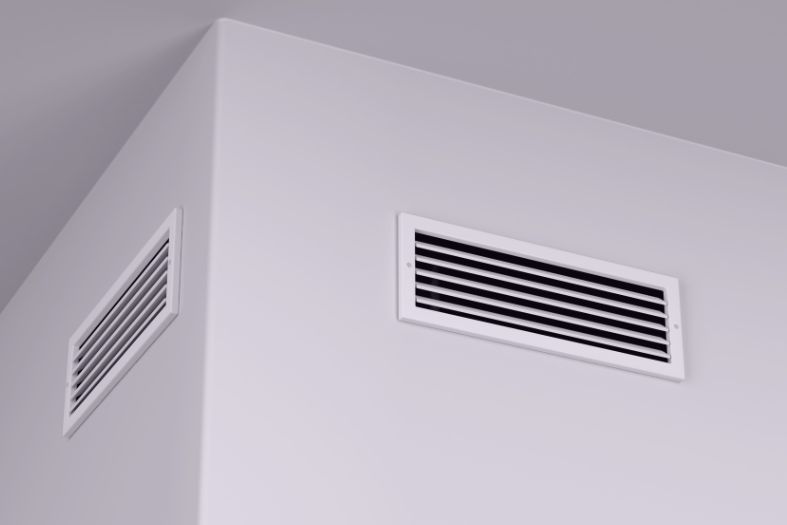


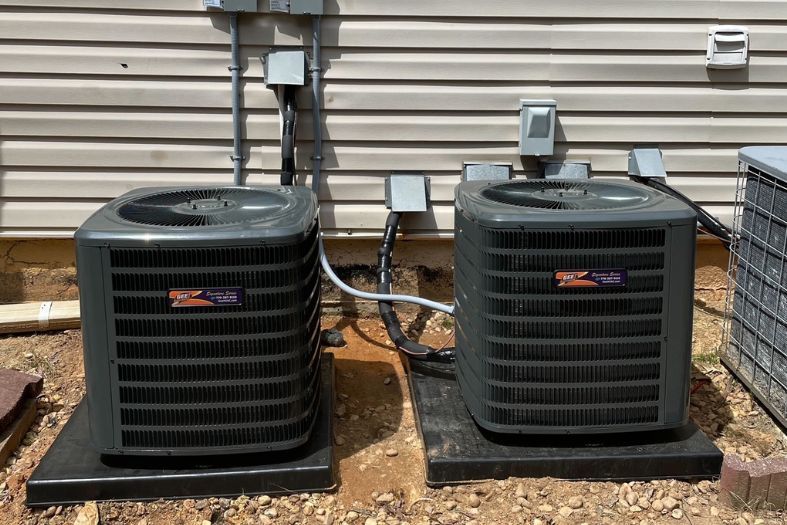
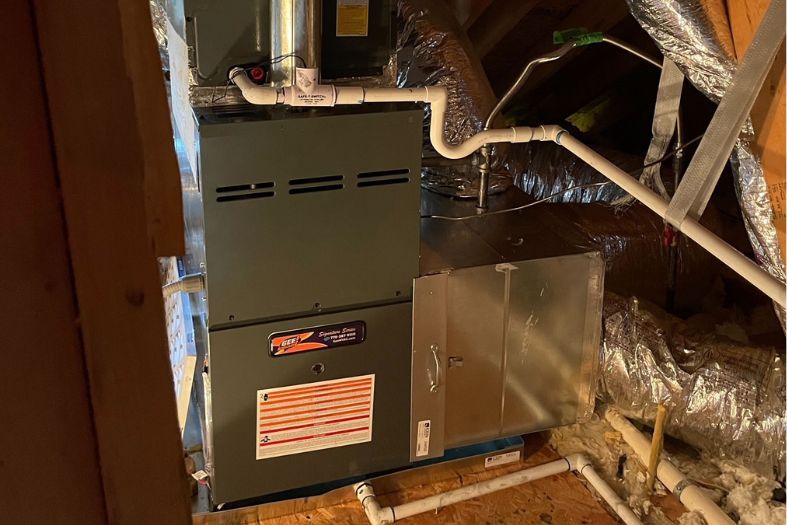
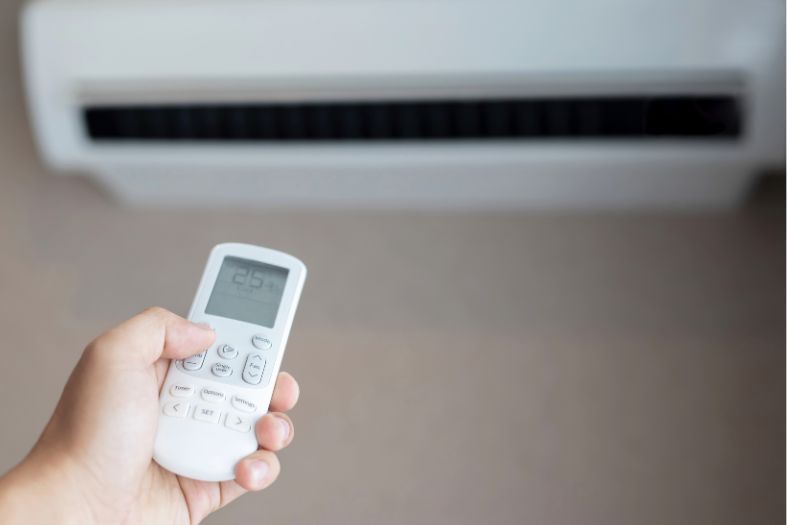

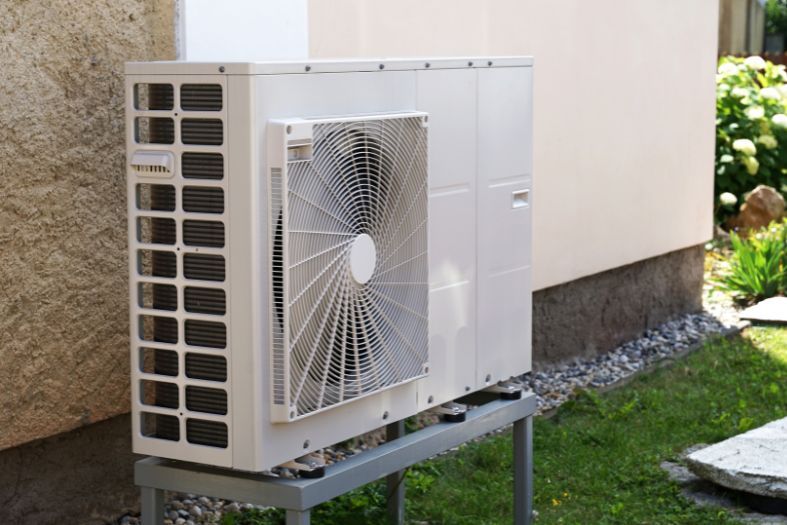

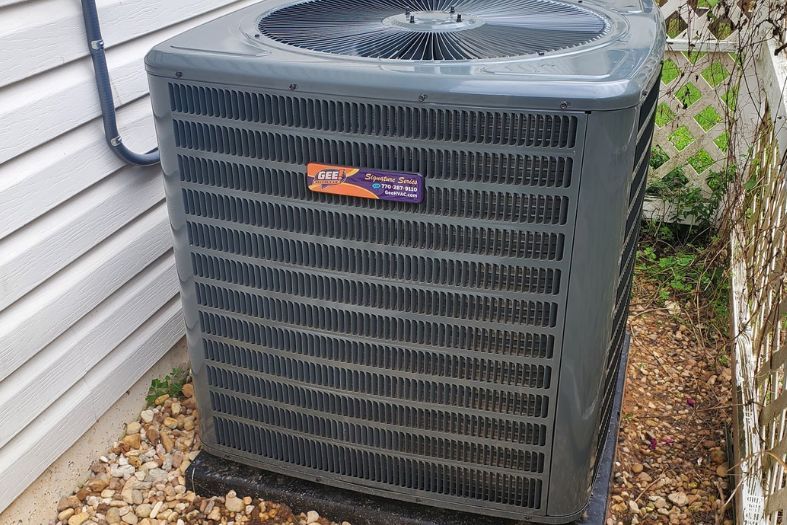
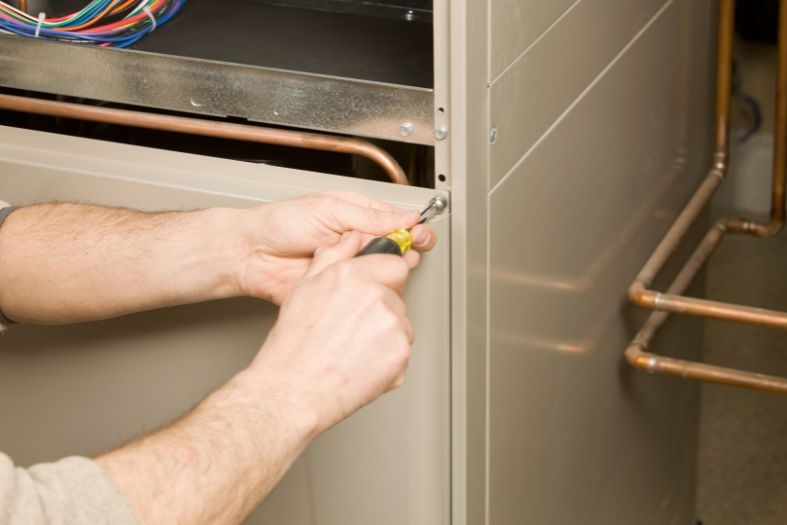
Leave a Reply